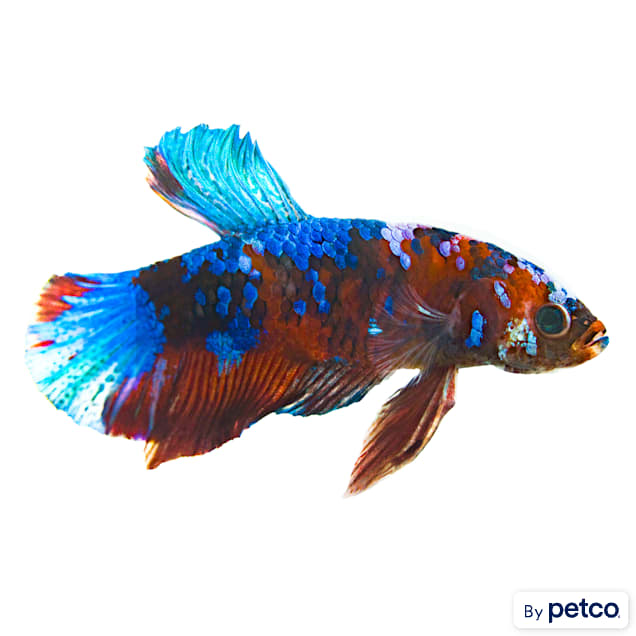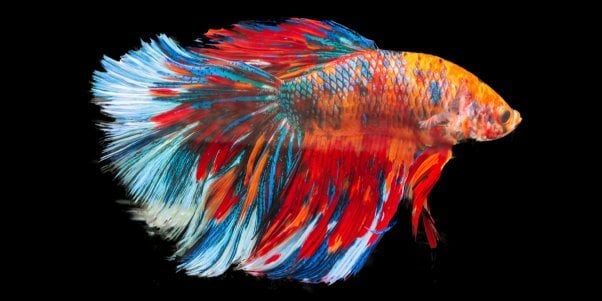Typical Betta Fish Diseases and How to Prevent Them
Typical Betta Fish Diseases and How to Prevent Them
Blog Article
Reproducing Betta Fish: a Comprehensive Step-By-Step Guide to Efficiently Raising Baby Bettas From Eggs to The Adult Years
Breeding Betta fish is a careful endeavor that needs mindful planning and implementation to ensure the effective development of fry from eggs to develop fish. Picking genetically diverse breeding sets with desirable qualities is just the beginning; producing an optimum environment and comprehending the details of the breeding process are just as essential. As the male Betta carefully constructs a bubble nest and guards the priceless eggs, the subsequent stages of care and change need attention to detail and understanding of ideal practices. How does one navigate the challenging yet satisfying course of supporting these vibrant creatures to their adult years?

Selecting Reproduction Pairs
When starting the trip of breeding Betta fish, selecting the appropriate breeding pairs is important to attaining desirable traits and a healthy and balanced family tree - betta fish. The first action in this process is to identify the specific attributes you wish to boost or preserve, such as shade, fin kind, and physique. It is vital to choose genetically varied pairs to prevent inbreeding, which can result in health and wellness issues and unwanted attributes
Assess potential breeding prospects carefully. A healthy and balanced male Betta ought to exhibit dynamic shades, an energetic attitude, and well-formed fins, while the lady must additionally display lively coloration and a rounded stomach, suggesting preparedness for spawning. Observing the temperament of both fish is important, as aggressive or excessively shy individuals may not reproduce successfully.
Maintaining records of the parent fish's origins can assist you track genetic traits and prospective concerns. Inevitably, investing time in the option process will substantially boost the likelihood of generating solid, lively spawn that satisfy your reproduction goals.

Preparing the Breeding Storage Tank
Creating an optimal reproduction setting is an essential step after picking appropriate pairs for Betta fish. The reproduction container must be particularly designed to provide comfort and boost the all-natural breeding behaviors of the fish. Begin with a storage tank dimension of at the very least 10 gallons to ensure adequate area for both the man and female Bettas.
Keep a gentle filtration system to keep the water clean while staying clear of solid currents that can worry the fish. Furthermore, an air rock can be included to provide oxygenation without interrupting the water surface as well much.
Temperature regulation is essential; go for a secure variety of 78-82 ° F(25-28 ° C) using a trusted heater. The pH degree need to be maintained between 6.5 and 7.5, and normal water modifications are essential to make certain high water high quality.
Include drifting plants or spawning sponges to create hiding areas for the female, while likewise urging bubble nest building by the man - betta fish. Make certain the container is totally free from sharp decors and any kind of possible risks, as the welfare of the fish need to always be prioritized throughout this critical stage of reproduction.
The Breeding Process
Normally, the reproducing procedure for Betta fish entails a series of distinctive and evident actions that indicate preparedness for reproduction. The male Betta starts by constructing a bubble nest at the water's surface area, which offers as a site for the fed eggs. This nest is essential, as it gives a secure setting for the eggs until they hatch out.
Once the nest is established, the man will present courtship actions, such as flaring his fins and exhibiting dynamic colors to bring in the lady. The woman, upon sensing the male's readiness, will certainly respond by showing upright stripes along her body, signaling her receptiveness.
When the female techniques, the male takes part in a breeding dance, usually causing an embrace understood as the "spawning." During this welcome, the female launches her eggs, which the male fertilizes instantly. The fed eggs after that fall to the bubble nest, where the male very carefully accumulates and returns them to the nest. Following this, the male presumes obligation for guarding the nest and ensuring the safety and security of the eggs till they hatch out, generally within 24-36 hours. This stage is vital in the breeding procedure, laying the foundation for successful fry advancement.
Taking Care Of Betta Fry
Looking after Betta fry requires cautious focus to their setting and nutrition to make certain healthy and balanced growth and development. After hatching out, Betta fry are extremely small and prone, requiring a stable and tidy environment. Preserving a water temperature in between 78 ° F and 80 ° F straight from the source is critical, as Betta fry grow in warm conditions. Furthermore, make certain that the water is without damaging contaminants; normal water changes of 10-20% are advised to preserve optimal water quality.
Feeding Betta fry is equally vital. They must be supplied infusoria or finely smashed high-quality fry food, as their mouths are also small to deal with bigger particles. As they grow, you can gradually introduce larger foods, such as child salt water shrimp or powdered flakes, to guarantee they get sufficient nutrition. Feed them percentages numerous times a day, being careful not to overfeed, which can cause water high quality problems.
Transitioning to Adult Bettas
As Betta fry fully grown, transitioning them to adult Bettas is a crucial stage that needs mindful administration of their atmosphere and social interactions. This procedure generally begins when the fry reach around 6 weeks of age, at which factor they can be gradually presented to a much more organized living atmosphere.
To facilitate this shift, it is necessary to guarantee that the water criteria-- such as temperature, pH, and ammonia levels-- are optimal and secure. Grown-up Betta fish prosper in warm water (around 78-80 ° F) with a pH of 6.5 to 7.5. Gradually adjust the fry to these conditions to minimize stress and anxiety.
Social communications are another key factor; male Bettas are notoriously territorial and aggressive. It is advisable to separate men into individual containers as they develop. Female Bettas can be housed together, however care should be required to check for indicators of hostility.
Furthermore, nutritional adjustments YOURURL.com must be made as the fry expand. Include premium pellets and live foods to support their growth and health and wellness. By taking care of these aspects properly, you can promote a successful transition to the adult years for your Betta fish.

Conclusion
Effective reproduction of Betta fish needs mindful focus to information throughout the entire process, from picking genetically varied pairs to giving optimum look after fry. By ensuring appropriate reproduction conditions and preserving water quality, the chance of healthy and balanced spawn boosts dramatically. Additionally, a balanced diet plan and gradual adaptation to grown-up environments are vital for the growth More Bonuses and development of Betta fish. Following these actions carefully promotes a growing populace of Betta fish, improving both their wellness and vitality.
Report this page